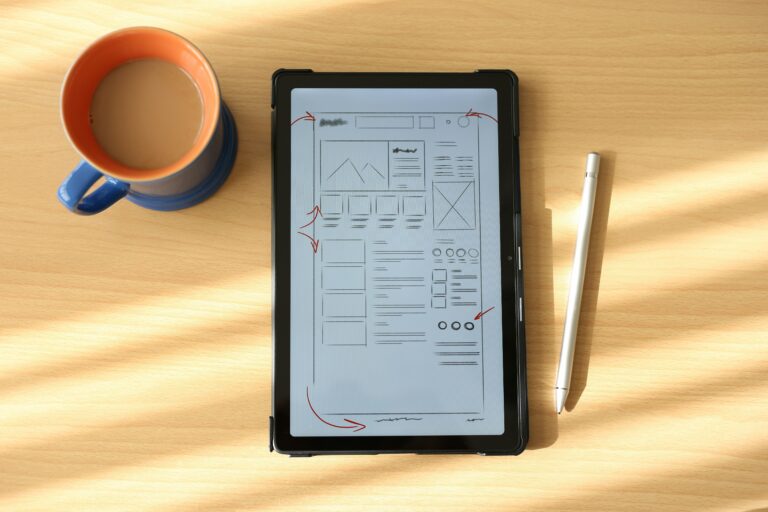In today’s dynamic business landscape, identifying and recruiting high-potential leaders is a critical factor in an organisation’s sustained success.
As senior leaders within your business, whether you hold the position of Head of HR, Head of Talent, or CEO, the responsibility to make crucial decisions regarding leadership hires falls upon you.
If you need help hiring for your commercial leadership team, view the leadership roles that we recruit for and discover our range of executive search services.
Executive assessments: introduction
Strong, visionary leadership is indispensable. Effective leadership can be a significant differentiator, driving innovation, fostering a positive workplace culture, and steering a business toward its strategic objectives. Therefore, identifying and attracting high-potential leaders is not just a desirable outcome; it’s a strategic imperative.
In this guide, we will delve deep into the art and science of identifying high-potential leaders. We will explore the latest trends and best practices in executive assessments for hiring, assessing leadership potential, reviewing leadership assessment tools, measuring leadership effectiveness, assessing leadership skills, crafting a competency model for commercial leaders, and implementing best practices for hiring high-potential leaders.
Executive assessments for hiring
Defining executive assessments
Executive assessments are structured evaluations designed to assess a candidate’s suitability for senior leadership roles. These assessments encompass various aspects, including cognitive abilities, emotional intelligence, personality traits, and leadership competencies.
Benefits of executive assessment methods
- Enhanced decision-making: A study by McKinsey & Company found that businesses using executive assessments in their hiring process were 2.7 times more likely to make effective leadership hires.
- Reduction in turnover: Executive assessments help identify candidates whose values and behaviours align with the organisation’s culture, reducing the risk of premature turnover.
- Increased performance: According to a Harvard Business Review report, executives selected through assessments outperformed their peers in key leadership behaviours.
Types of executive assessments
- Behavioural assessments: These evaluate a candidate’s actions and reactions in various professional scenarios, providing insights into their decision-making and leadership style.
- Cognitive assessments: These assess cognitive abilities, problem-solving skills, and critical thinking, which are crucial for leadership roles.
- Personality assessments: Tools like the Big 5 Personality Traits can help identify personality characteristics that align with leadership competencies.
Integrating executive assessments into the hiring process
To maximise the benefits of executive assessments, consider incorporating them at key stages of the hiring process:
- Pre-screening: Assessments can be used to shortlist candidates who meet the basic criteria.
- Interviews: Employ behavioural and situational assessments to evaluate leadership potential.
- Onboarding: Use assessments to identify areas for leadership development and coaching.
Assessing leadership potential with executive assessments
Identifying leadership potential requires a nuanced understanding of the qualities and traits that make a leader effective. Recent research by the Center for Creative Leadership highlights several key attributes:
- Adaptability: Leaders must navigate change effectively.
- Vision: A clear vision inspires and aligns teams.
- Learning agility: Leaders need to continuously learn and adapt.
- Emotional intelligence: Strong interpersonal skills are crucial.
Challenges in assessing leadership potential
- Subjectivity in assessment: Assessing leadership potential is often subjective, influenced by personal biases and varying interpretations, potentially leading to inconsistent evaluations. To mitigate this, businesses use structured criteria and multiple assessors.
- Limited data availability: External or early-career candidates may lack comprehensive historical data for assessment, hindering accurate evaluation. Mitigation strategies include thorough reference checks and assessing competencies and potential.
- Changing business dynamics: Dynamic business environments require leaders to adapt to evolving challenges, making it challenging to assess leadership potential. Assessors must consider adaptability and change leadership capabilities.
- Lack of standardised assessment criteria: The absence of standardised criteria makes it difficult to assess leadership potential consistently across candidates and organisations. Developing competency models tailored to specific needs can help.
- Overlooking introverted leaders: Assessments may favour extroverted qualities, potentially overlooking introverted individuals with valuable leadership potential. Assessments should encompass a range of leadership styles and traits.
- Ethical considerations: Ethical dilemmas arise when assessing personal attributes and behaviours, raising concerns about privacy and discrimination. Ethical assessment practices and responsible data use are essential.
- Balancing leadership and technical Skills: Leadership roles require a balance between leadership skills and technical expertise, making it challenging to assess candidates who excel in one aspect but lack the other. your company should define specific leadership competencies for roles and tailor assessments accordingly.
Effective methods for assessing leadership
- Psychometric assessments: Psychometric assessments use standardised tests and questionnaires to measure personality traits, cognitive abilities, and emotional intelligence. These provide objective data for predicting leadership potential. Learn more.
- 360-Degree feedback: Gathering input from multiple sources, including peers, superiors, and self-assessment, 360-degree feedback assesses leadership behaviours, interpersonal skills, and communication, offering a well-rounded perspective for development.
- Behavioural interviews: Structured interviews focus on past behaviours as indicators of future potential. Candidates provide specific examples of how they’ve handled leadership situations, showcasing problem-solving, interpersonal, and decision-making skills. Learn more.
- Assessment centres: These simulate real workplace situations through exercises and role-plays, assessing skills like decision-making, teamwork, and problem-solving, offering holistic insights into leadership potential.
- Leadership competency assessment: Tailored to an company’s leadership model, these assessments evaluate leaders against specific competencies critical for their roles, providing a structured approach for skill development.
- Situational Judgment Tests (SJTs): Candidates respond to hypothetical scenarios, assessing their judgment, adaptability, and interpersonal skills in real workplace contexts.
- Assessment of Emotional Intelligence (EI): Evaluating emotional intelligence, these assessments measure candidates’ ability to perceive, understand, manage, and use emotions effectively, critical for effective leadership.
Reviewing leadership assessment tools
With many leadership assessment tools available, it’s crucial to select the most suitable ones for your unique business needs. Let’s explore six prominent leadership assessment tools, along with their features, benefits, and potential drawbacks.
1. Big 5 Personality
The Big 5 Personality assessment, also known as the Five-Factor Model, measures an individual’s personality traits based on five key dimensions: Openness, Conscientiousness, Extraversion, Agreeableness, and Neuroticism. These traits can provide insights into how individuals are likely to behave in various situations, including leadership roles.
Pros:
- Comprehensive personality assessment: The Big 5 assesses a wide range of personality traits, offering a holistic view of a candidate’s characteristics.
- Tailored leadership selection: It allows businesses to tailor their leadership selections based on specific traits relevant to the role.
- Widely recognised: The Big 5 is a well-established and widely recognised assessment model, making it easy to find experts for interpretation.
- Scientific foundation: The model is grounded in psychological research, providing a solid scientific basis.
- Versatile: It can be applied across various industries and positions, from entry-level to executive roles.
Cons:
- Complex interpretation: Interpreting Big 5 results can be complex and may require expertise in personality psychology.
- Limited to personality: It primarily assesses personality traits and may not directly measure leadership skills or competencies.
- Time-consuming: Administering and analysing the assessment can be time-consuming, especially in high-volume hiring.
- Potential for faking: Candidates may attempt to manipulate their responses to create a more favorable personality profile.
- Cultural bias: The assessment’s applicability and interpretation may vary across cultures, requiring cultural sensitivity.
2. The Emotional Intelligence Appraisal
The Emotional Intelligence Appraisal assesses an individual’s emotional intelligence (EI) based on four key skills: Perceiving Emotions, Managing Emotions, Understanding Emotions, and Using Emotions. EI is crucial for effective leadership as it influences how leaders manage themselves and their relationships.
Pros:
- Focus on Emotional Intelligence: This assessment directly measures emotional intelligence, a critical aspect of effective leadership.
- Actionable feedback: It provides actionable feedback and strategies for improving emotional intelligence, supporting leadership development.
- Research-backed: The assessment is supported by extensive research demonstrating the importance of emotional intelligence in leadership.
- Applicability across roles: EI is relevant for leaders at all levels, making this assessment versatile.
- Enhanced interpersonal skills: Developing EI can enhance interpersonal skills, critical for building and leading high-performing teams.
Cons:
- Narrow focus: The assessment primarily focuses on emotional intelligence and may not cover all leadership competencies.
- Interpretation complexity: Some individuals may find the interpretation of emotional intelligence scores challenging without proper training.
- Self-report bias: Responses may be influenced by how individuals perceive themselves, leading to potential bias.
- Limited predictive validity: It may not always predict leadership success or performance outcomes.
3. Social Styles
Social Styles assessment categorises individuals into one of four social styles: Driver, Analytical, Amiable, and Expressive. It focuses on how individuals interact with others, communicate, and make decisions, which are crucial aspects of leadership.
Pros:
- Effective communication: Social Styles can help individuals understand their communication preferences and adapt to effectively communicate with others.
- Improved team dynamics: Awareness of social styles within a team can improve collaboration and reduce conflicts.
- Tailored leadership approaches: Leaders can tailor their leadership style to match the social styles of their team members, enhancing leadership effectiveness.
- Easy to understand: The model is straightforward and easy to understand, requiring minimal training for interpretation.
- Applicable across industries: It can be applied in various industries and organisations of different sizes.
Cons:
- Simplified view: The model may oversimplify complex human behaviors and interactions.
- Limited predictive power: It may not provide a comprehensive prediction of leadership success or performance.
- Static assessment: Social Styles categorise individuals into fixed categories, potentially overlooking individual growth and adaptability.
- Risk of stereotyping: There’s a risk of stereotyping individuals based on their social style, leading to biases.
- Lack of depth: It may not capture the depth of leadership competencies beyond interpersonal skills.
4. Myers-Briggs
The Myers-Briggs Type Indicator (MBTI) categorises individuals into one of 16 personality types based on their preferences in four key dichotomies: Extraversion-Introversion, Sensing-Intuition, Thinking-Feeling, and Judging-Perceiving. It aims to provide insights into how individuals perceive the world and make decisions.
Pros:
- Detailed personality profiles: MBTI provides detailed personality profiles, offering a nuanced view of individuals’ preferences.
- Self-reflection: It encourages self-reflection and self-awareness, which can be valuable for leadership development.
- Team building: MBTI can enhance team dynamics by helping team members understand and appreciate differences.
- Established tool: It has a long history of use and a large user base, making it widely recognised.
- Personal growth: Individuals can use MBTI results to identify areas for personal growth and skill development.
Cons:
- Lack of scientific consensus: The MBTI has faced criticism for lacking robust scientific evidence to support its validity.
- Inflexible categories: The assessment places individuals into specific categories, potentially oversimplifying personality.
- Potential for misuse: There’s a risk of using MBTI results to stereotype individuals or make hiring decisions solely based on personality type.
- Limited predictive value: MBTI may not predict leadership success or job performance accurately.
- Cost and time: Administering MBTI can be time-consuming, and certified practitioners may be required for interpretation.
5. DISC
The DISC assessment categorises individuals into four personality types: Dominance, Influence, Steadiness, and Conscientiousness. It focuses on behavioural preferences, communication styles, and how individuals approach tasks and challenges.
Pros:
- Enhanced communication: DISC results help individuals understand their communication styles and adapt to effectively interact with others.
- Conflict resolution: It can aid in conflict resolution by providing insights into the drivers of conflicts within teams.
- Versatility: DISC can be applied in various organisational contexts, from team building to leadership development.
- Practical application: It offers practical advice for individuals to improve their interactions and relationships.
- Accessible: DISC assessments are relatively easy to administer and understand, making them accessible for many businesses.
Cons:
- Behavioural focus: It primarily focuses on behaviour and may not provide a comprehensive view of personality.
- Limited predictive value: DISC may not be a strong predictor of leadership success or job performance.
- Overemphasis on categories: Relying too heavily on DISC categories can oversimplify human behaviour.
- Potential for stereotyping: There’s a risk of using DISC results to stereotype individuals based on their behavioural style.
- Dependent on self-report: The accuracy of DISC results relies on individuals’ self-reporting, which may not always be objective.
6. Saville Assessment
The Saville Assessment is a psychometric assessment tool designed to evaluate an individual’s cognitive abilities, personality traits, and motivation. It is often used for talent assessment, leadership development, and recruitment.
Pros:
- Comprehensive assessment: Saville Assessment covers cognitive abilities, personality traits, and motivation, offering a holistic view.
- Customisation: It can be customised to align with specific job roles and organisational needs.
- Highly predictive: Research suggests that Saville Assessment is highly predictive of job performance.
- Objective data: Provides objective data that can inform hiring decisions and development plans.
- Scalability: Suitable for companies of different sizes, from small businesses to large enterprises.
Cons:
- Resource-intensive: Implementing Saville Assessment may require a dedicated team and financial resources.
- Complexity: Interpretation of results can be complex and may require trained professionals.
- Lengthy administration: The assessment can be time-consuming for candidates.
- Cost: Licensing and usage fees may be prohibitive for some organisations.
- Potential for stereotyping: As with any assessment, there’s a risk of stereotyping based on results, requiring careful interpretation.
Measuring leadership effectiveness
Assessing leadership potential and skills is essential, but it’s equally crucial to measure leadership effectiveness in real-world scenarios.
Here are seven metrics to consider, each accompanied by a brief explanation and insights into potential pros and cons:
1. Employee engagement
Employee engagement measures the emotional commitment employees have toward their work and the business. Engaged employees are more likely to be motivated, productive, and loyal.
Pros:
- Performance indicator: High engagement often correlates with better job performance and team collaboration.
- Retention: Engaged employees are less likely to leave the organisation, reducing turnover costs.
- Innovation: Engaged employees are more likely to contribute innovative ideas and solutions.
Cons:
- Subjectivity: Measuring engagement can be subjective and influenced by various factors.
- Influence of external factors: External factors, such as industry trends or economic conditions, can impact engagement levels.
- Limited to existing employees: This metric may not apply to potential leaders not yet part of the organisation.
Best practices: Regularly conduct employee engagement surveys to gather feedback, identify areas of improvement, and track changes over time.
Recommended reading: Gallup Employee Engagement Survey
2. Leadership 360-degree feedback
360-degree feedback involves gathering input from multiple sources, including peers, subordinates, superiors, and self-assessment, to provide a comprehensive view of a leader’s effectiveness.
Pros:
- Holistic assessment: Provides a well-rounded perspective on a leader’s strengths and areas for improvement.
- Personal growth: Encourages self-awareness and personal development.
- Objective data: Combines objective feedback with self-assessment for a balanced view.
Cons:
- Complexity: Collecting and analysing feedback from multiple sources can be complex and time-consuming.
- Potential for bias: Feedback may be influenced by personal relationships or biases.
- Privacy concerns: Some leaders may have concerns about the privacy of feedback.
Best practices: Ensure anonymity in the feedback process to encourage honest input and use the feedback for coaching and development.
3. Leadership impact on Key Performance Indicators (KPIs)
Evaluate how a leader’s actions and decisions impact key performance indicators such as revenue growth, customer satisfaction, and employee turnover.
Pros:
- Objective measurement: Connects leadership behaviour directly to organisational outcomes.
- Alignment: Ensures leaders are aligned with the organisation’s strategic objectives.
- Data-driven decisions: Informs leadership development efforts based on measurable impact.
Cons:
- Time lag: It may take time to see the full impact of leadership decisions on KPIs.
- External factors: KPIs can be influenced by external factors beyond a leader’s control.
- Limited scope: Some leadership qualities, like cultural influence, may not be easily quantifiable.
Best Practices: Define clear KPIs that are directly influenced by leadership actions and regularly track progress.
Measuring The Impact Of Leadership Development: Getting Back To Basics – Harvard Business Publishing
4. Employee turnover rate
Employee turnover rate measures the percentage of employees who leave the company within a specific period. Low turnover is generally a positive sign of effective leadership.
Pros:
- Retention indicator: Low turnover indicates that leaders are creating a positive work environment and retaining talent.
- Cost savings: Reduced turnover saves recruitment and training costs.
- Stability: Low turnover contributes to stability and continuity.
Cons:
- External factors: Economic conditions or industry-specific challenges can impact turnover rates.
- Not always negative: In some cases, turnover may be necessary for growth or change.
Best practices: Conduct exit interviews to understand the reasons behind employee departures and address underlying issues.
Recommended Reading: SHRM – Employee Turnover
5. Leadership development ROI
Leadership development ROI measures the financial return on investments made in leadership development programs and activities.
Pros:
- Resource allocation: Helps allocate resources effectively to leadership development initiatives.
- Accountability: Demonstrates the impact of leadership development efforts to stakeholders.
- Continuous improvement: Informs adjustments and improvements in leadership programs.
Cons:
- Complex calculation: Calculating ROI can be complex and may require data on various costs and benefits.
- Long-term perspective: ROI analysis may not capture the long-term benefits of leadership development.
Best practices: Collect data on the costs of leadership development programs and the resulting improvements in leadership effectiveness.
Recommended Reading: ATD – Measuring the ROI of Leadership Development
6. Leadership competency assessment
Leadership competency assessments evaluate leaders against specific competencies and behaviours identified as critical for success in their roles.
Pros:
- Customisation: Competency assessments can be tailored to align with the businesses leadership model.
- Objective measurement: Provides a structured way to assess leadership skills and track improvements.
- Alignment: Ensures leaders are developing the competencies required for their specific roles.
Cons:
- Resource-intensive: Developing and implementing competency assessments can require significant resources.
- Potential for bias: Assessors may introduce bias into the evaluation process.
- Skill vs. potential: Competency assessments may focus on existing skills rather than leadership potential.
Best practices: Clearly define leadership competencies, use objective assessment methods, and provide feedback for development.
Recommended reading: SHRM – Leadership Competency Models
7. Employee satisfaction surveys
Employee satisfaction surveys collect feedback on various aspects of the workplace, including leadership effectiveness.
Pros:
- Employee-centric: Provides insights into how employees perceive leadership and its impact on their satisfaction.
- Continuous feedback: Allows for regular assessment and improvement of leadership practices.
- Improvement areas: Pinpoints specific areas where leadership can enhance employee satisfaction.
Cons:
- Subjective: Employee satisfaction is influenced by individual perceptions and expectations.
- Interconnected factors: Satisfaction can be influenced by various factors, not solely leadership.
Best practices: Use employee satisfaction survey results to inform leadership development plans and initiatives.
Recommended reading: Gallup Employee Satisfaction Survey
Assessing leadership skills
While leadership potential is essential, it must be complemented by the development of specific leadership skills. Here are some key leadership skills to assess:
- Communication skills: Evaluate a leader’s ability to convey ideas clearly, actively listen, and adapt communication to different audiences.
- Decision-making: Assess how leaders approach decision-making, including their ability to gather information, analyse options, and make informed choices.
- Conflict resolution: Evaluate a leader’s skill in addressing and resolving conflicts within teams and the organisation.
- Strategic thinking: Assess the leader’s capacity to think strategically, set goals, and plan for the future.
- Change management: Evaluate how effectively leaders navigate and lead during times of change and uncertainty.
- Team building: Assess the leader’s ability to build and nurture high-performing teams.
- Emotional Intelligence: Measure emotional intelligence to understand a leader’s capacity for self-awareness, empathy, and relationship management.
- Innovation: Evaluate a leader’s openness to innovation and ability to foster a culture of creativity.
- Adaptability: Assess how well leaders adapt to changing circumstances and learn from experiences.
- Coaching and development: Measure the leader’s commitment to coaching and developing team members.
Competency model for commercial leaders
Creating a competency model specific to commercial leaders is crucial for identifying and developing leaders who can drive revenue growth and market success. Here’s an example of a competency model tailored for commercial leaders:
1. Strategic vision
Commercial leaders should possess a clear and compelling strategic vision that guides the company toward revenue growth and market expansion.
Behaviours to assess:
- Demonstrates a deep understanding of market trends and opportunities.
- Develops and communicates a clear and inspiring commercial strategy.
- Aligns team members and resources with the strategic vision.
Development areas:
- Strategic thinking and planning skills.
- Communication of the vision to diverse stakeholders.
- Execution of strategic initiatives.
2. Market insight
Commercial leaders should have a keen understanding of the market landscape, customer needs, and competitive dynamics.
Behaviours to assess:
- Conducts thorough market research and analysis.
- Adapts strategies based on changing market conditions.
- Identifies and seizes market opportunities.
Development areas:
- Market research and analysis skills.
- Continuous monitoring of market trends.
- Agility in responding to market shifts.
3. Customer-centric approach
Commercial leaders should prioritise customer satisfaction and engagement, driving loyalty and revenue growth.
Behaviours to assess:
- Ensures products and services align with customer needs.
- Builds strong customer relationships.
- Monitors and improves customer satisfaction metrics.
Development areas:
- Customer relationship management skills.
- Customer-centricity mindset.
- Ability to translate customer insights into actionable strategies.
4. Sales leadership
Commercial leaders must effectively lead sales teams to meet revenue targets and drive business growth.
Behaviours to assess:
- Sets ambitious sales goals and targets.
- Provides sales teams with guidance, coaching, and support.
- Monitors and analyses sales performance metrics.
Development areas:
- Sales leadership and coaching skills.
- Data-driven decision-making in sales.
- Sales strategy development.
5. Innovation and adaptation
Commercial leaders should foster a culture of innovation and adaptability within their teams and organisations.
Behaviours to assess:
- Encourages and rewards innovative thinking.
- Adapts strategies and approaches based on changing market dynamics.
- Promotes a growth mindset and willingness to experiment.
Development areas:
- Innovation leadership skills.
- Change management capabilities.
- Creating an environment that supports experimentation.
Identifying high-potential commercial leaders
Identifying high-potential leaders requires a systematic approach that considers both current performance and future potential. Here are steps to help you identify high-potential leaders in your organisation:
- Define high-potential criteria: Clearly outline the criteria and attributes that define high-potential leaders in your business. Consider factors such as leadership skills, adaptability, strategic thinking, and innovation.
- Assess current performance: Evaluate the current performance of potential leaders. Look at their track record, achievements, and contributions to the company.
- Evaluate leadership potential: Assess leadership potential by considering factors such as learning agility, emotional intelligence, and the ability to lead in a changing environment.
- Collect feedback: Gather feedback from peers, subordinates, and superiors to gain a 360-degree view of potential leaders. This can be done through surveys, interviews, and assessments.
- Create development plans: For individuals identified as high-potential leaders, create customised development plans that focus on strengthening leadership skills and addressing areas for improvement.
- Provide opportunities: Offer high-potential leaders opportunities to take on challenging assignments, lead cross-functional teams, and participate in leadership development programs.
- Monitor progress: Continuously monitor the progress of high-potential leaders, provide feedback, and adjust development plans as needed.
- Succession planning: Use your pool of high-potential leaders to inform succession planning and ensure a pipeline of leaders ready to take on key roles.
Conclusion
Identifying high-potential leaders is a strategic imperative for businesses aiming to thrive in today’s competitive landscape. By leveraging executive assessments, assessing leadership potential, and utilising the right tools and metrics, you can build a pipeline of leaders who are equipped to drive success.
If you need help hiring for your commercial leadership team, we are an executive search firm specialising in commercial leadership and senior hires. Contact us today for support.




